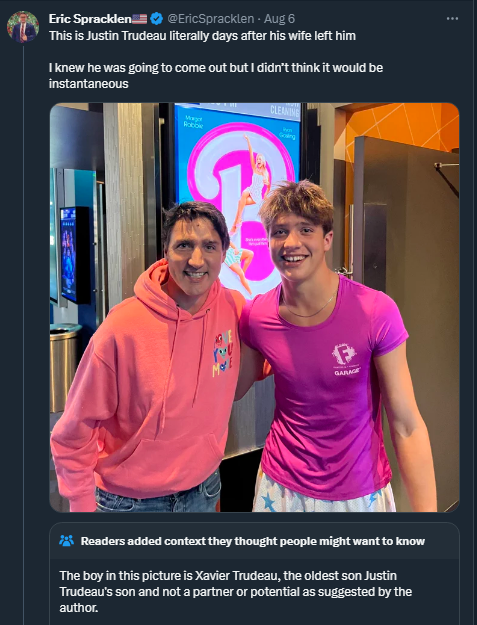We almost always assume that gender preferences are inbuilt. Girls naturally prefer pink and boys naturally prefer blue, it is said. Anecdotal evidence tells us this, and science to a degree often reinforced the idea. This is probably why some people (on social media, of course) were upset at Justin Trudeau wearing pink at a Barbie screening with his son Xavier due to the perceptions of the colour.

Why should someone be upset about men in pink anyway?
After decades of study, historian Jo Paoletti showed that in the US at least, from the early 1900s to the 1980s, fashion trends were largely reversed! Young girls were often dressed in “dainty” blue and young boys frequently attired in “stronger” pink. According to various theories, blue was generally believed to be associated with the Virgin Mary, while pink was linked to red, seen as a strong and masculine colour.

To a modern mind, this complete reverse-assignment of the perceived ‘masculine’ and ‘feminine’ suggests that things we currently perceive as gender qualities, whether it be colour preference or behavioural traits, are not absolute, but in fact often arbitrarily assigned (by society) and then socialised into acceptance.
However, according to research by psychologist Dr Eva Heller, the most preferred colour for both adult genders is blue by a wide margin.
Why is pink ‘girly’?
Even casual observation tells us pink is not automatically seen as feminine in other cultures – for example, Italian men’s fashion frequently features pink, while in Japan, China, and South Korea, wearing the colour doesn’t mark you as a ‘girl’. Remember BTS hit song ‘Dynamite‘ where their MV palette was dominated by this pastel hue?
If you have nieces or nephews, you’ll find that babies from 4 to 24 months old tend to have a unified preference for red – this is because that’s the colour they can recognise first. According to research, both girls and boys are attracted to primary colours, starting with red, then blue, and then green and yellow.
It’s not until the child grows older do they tend to express more preference towards gender-biased colours. When they’re old enough to want toys, it’s not uncommon for girls to lean towards red or pink.
So where does this bias come from?
Today’s colour association wasn’t established until the 1940s. The reason? It’s because of American manufacturers and retailers. Yep, you can blame capitalism.
Gender-based marketing to impressionable young minds may have a part to play – children know their gender identity by about age 2 – which means if they know they’re ‘girls’, society at large likely starts programming them at some level, to generally prefer pink. Why? Look at toy stores and children’s clothing stores, and how they segregate by colours – when was the last time you saw a pink G. I. Joe? For an individual child, this process means looking around them and reasoning: “Girls wear pink. I’m a girl. I must like pink.”

With exposure to colour-gender association at such a young age, is it any surprise that children accept the colour assigned to the gender as natural? According to the Smithsonian, colour-segregated gender marketing started just before WWI, and did not settle on the present blue and pink gender assignments until the 1940s.
The development of this popular myth is similar to how Coca-Cola built up the overtly commercialised image of Santa Claus we know today, until it became the standard representation of St. Nick used across the English-speaking world. (Yes, Santa is totally a commercial creation by Coca-Cola – this is why people buy things for Christmas)
Colour is a Marketing Influence
Without marketing influence, would we associate pink products with femininity? What are the negative repercussions? For one, reinforcing the idea of gender differences reinforces gender stereotypes. After all, stereotypes inevitably result in the social evil of discrimination towards people who do not conform.
What would you think if you saw a guy dressed in a pink suit, carrying a pink briefcase and driving a pink Bentley? Now imagine if he was dressed in a blue suit, blue briefcase and blue Bentley. The only difference is the colour, but that would no doubt taint most people’s outlook. Would he be any less successful, capable, or even masculine?
So next time you get a pink umbrella, you don’t have to be embarrassed by it if you’re a guy – you’re just saying that you’re not influenced by gender-biased marketing. Instead you can remind yourself that men who wear pink can actually have an edge, as shown by a study commissioned by Cotton USA, in which dudes who don pink earn £1,000 more a year.
by Vincent Tan











